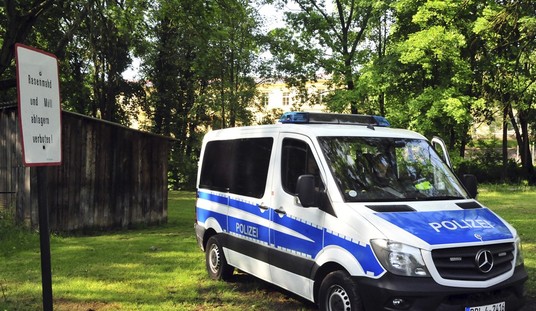It won’t mean shutting down public squares for two years, and it won’t be a constant war. However, Dr. Robert Redfield tells NPR, it will take a series of battles to put an end to the danger from the coronavirus pandemic, battles that could stretch out for two years. In order to win, Redfield says, we have to start building a health-care infrastructure that can respond to pandemics with more alacrity:
This virus is going to be with us. I’m hopeful that we’ll get through this first wave and, and have some time to prepare for the second wave. I’m hopeful that the private sector in its ingenuity and working with the government, NIH, will develop a vaccine that ultimately will change the impact of this virus.
But for the next 24 months, you know, we’re all in this together, and the most important thing that we can do is twofold: the American public fully embracing the social distancing that we requested to protect the vulnerable; and secondly, to operationalize the bread and butter of public health — you know, early case identification, isolation, contact tracing — so that this outbreak does not get the upper hand, as it has, unfortunately, in New York City, in northern New Jersey, and now New Orleans.
Redfield also warns that this is much worse for public health than influenza, which is itself fatal for tens of thousands each year. It’s more infectious, for one thing, and “viral shedding” starts earlier in the cycle. It’s a pandemic waiting to happen, in other words:
This virus does have the ability to transmit far easier than flu. It’s probably now about three times as infectious as flu.
One of the [pieces of] information that we have pretty much confirmed now is that a significant number of individuals that are infected actually remain asymptomatic. That may be as many as 25%. That’s important, because now you have individuals that may not have any symptoms that can contribute to transmission, and we have learned that in fact they do contribute to transmission.
And finally, of those of us that get symptomatic, it appears that we’re shedding significant virus in our oropharyngeal compartment, probably up to 48 hours before we show symptoms. This helps explain how rapidly this virus continues to spread across the country, because we have asymptomatic transmitters and we have individuals who are transmitting 48 hours before they become symptomatic.
What does “three times more infectious than the flu” mean in practical terms? An expert gave the Daily Mail the absolute-worst-case mathematical explanation last week:
Dr Hugh Montgomery, a professor of intensive care medicine at University College London, explained how the virus could be passed from one person to thousands as he called on Britons to heed advice on social distancing.
‘Normal flu, if I get that, I’m going to infect on average about 1.3 or 1.4 people – if there was such a division,’ he told Dr Xand van Tulleken on Channel 4’s Coronavirus: How to Isolate Yourself programme.
‘If those 1.3 or 1.4 people gave it to the next lot that’s the second time it gets passed on. By the time that’s happened 10 times, I’ve been responsible for about 14 cases of flu.’
Dr Montgomery went on to illustrate how coronavirus is far more infectious than the common flu, with one person potentially infecting 59,000 others under the same circumstances.
This explanation has to come with serious caveats. First, there’s no telling what the first round of infections will produce. Subsequent rounds will get limited by exposing people who have already been exposed. Social distancing can and will limit transmission in the later rounds, and appears to have already begun to do so. As an explanation of how this accelerated so fast after initial seeding, it works, but the numbers here are the hypothetical outlier possibilities after ten or more iterations.
Nevertheless, its infectious potential and broader window of contagion means that it will be very tough indeed to keep under control. Even with the mitigation now in place — which appears to be working to “flatten the curve” — will have to be “aggressively reembraced” in the fall when the virus will almost certainly re-emerge, Redfield says:
As you know, there’s a number of states right now that have limited transmission, and so getting back into those states with the public health community for early case definition, isolation, contact tracing, I think this is what we’re going to be doing very aggressively May, June, July — to try to use those standard public health techniques to limit the ability to have wide-scale community transmission as we get prepared, most likely, for another wave that we would anticipate in the late fall, early winter where there will still be a substantial portion of Americans that are susceptible.
Hopefully, we’ll aggressively reembrace some of the mitigation strategies that we have determined had impact, particularly social distancing.
That doesn’t necessarily mean lockdown orders and business closures. It does, however, suggest that at-risk populations will need to isolate themselves again if they have not acquired any immunity to COVID-19 in the intervening time. That will still have a negative impact on the economy as well as the national spirit, which has risks of its own, as Donald Trump and others have warned. And that will have more impact on places of higher population density too, as people in cities withdraw from close interactions.
This is a war, not a battle, and it will last a long time. Social distancing will be with us for the long haul, at least until an effective vaccine gets developed and widely distributed. Even after a vaccine gets developed, the disease might start mutating, which means we’ll be chasing it the same way we do with influenza now. At least that will be a manageable risk going forward.








